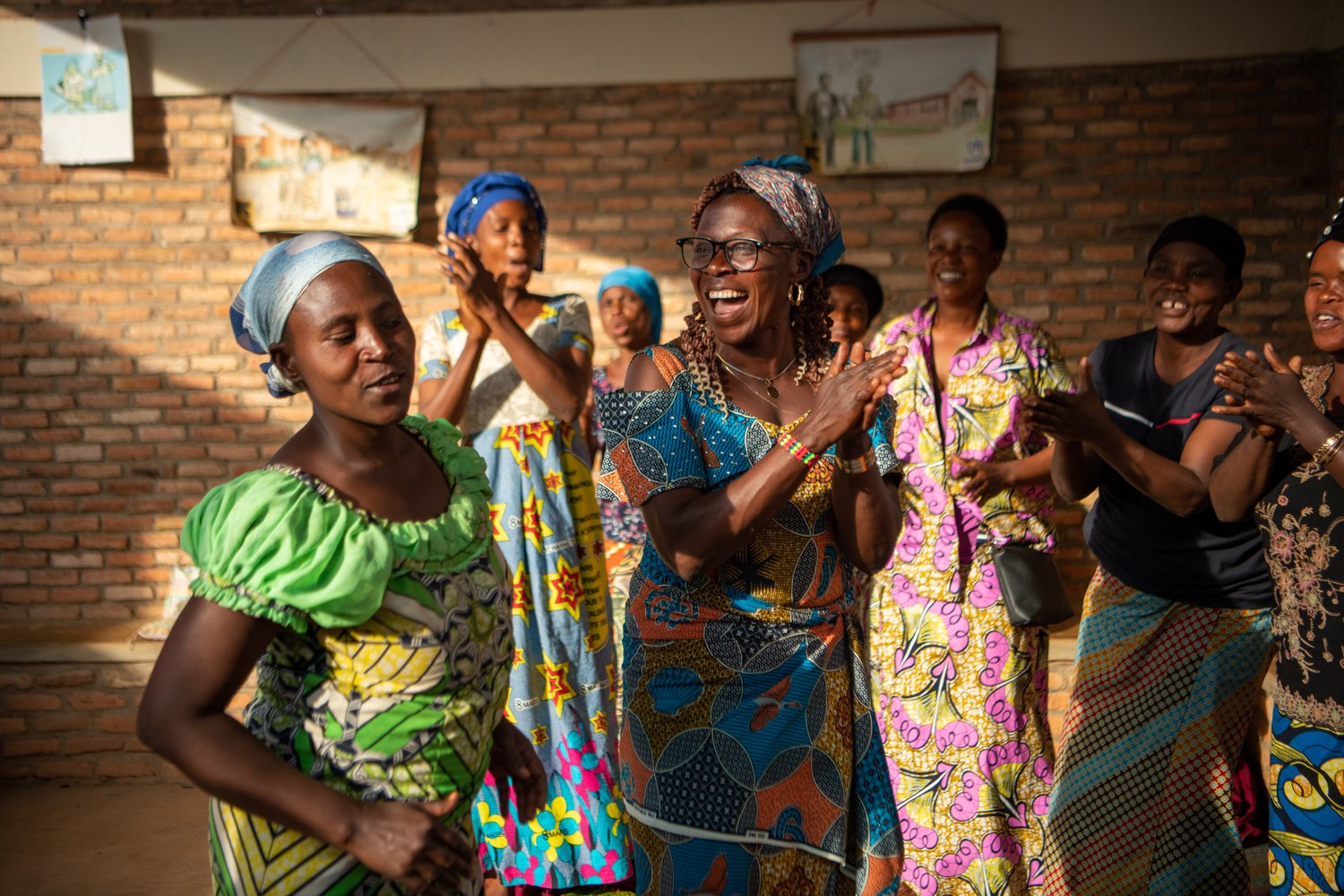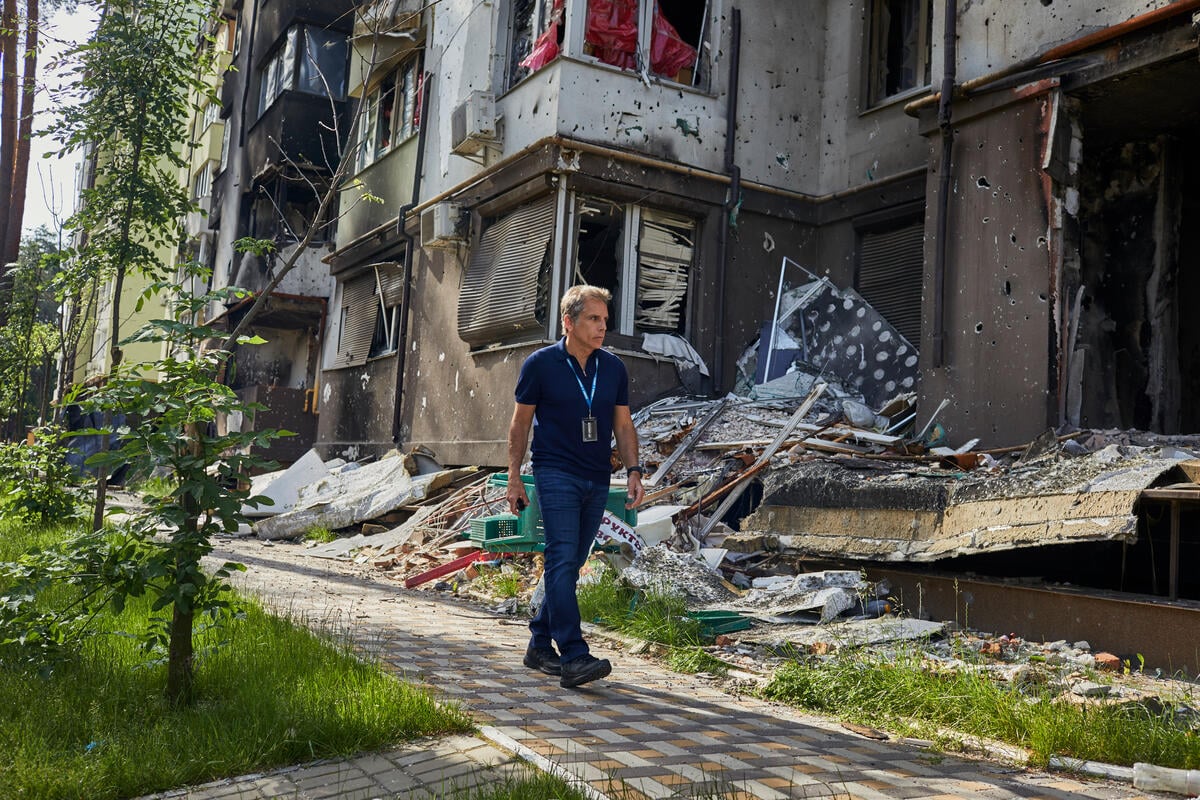Live webcast and Google Earth tour featured on new UNHCR site
Live webcast and Google Earth tour featured on new UNHCR site
GENEVA, June 17 (UNHCR) - Fancy the idea of hopping around Asia and Africa in less than five minutes with the Rolling Stones classic "Gimme Shelter" ringing in your ears? Or, how would you like to watch live video footage of refugees in Chad or internally displaced people in Colombia as they mark World Refugee Day this weekend?
Both will be possible thanks to innovative technology being introduced this week on UNHCR's new website, which was launched on Monday. The Google Earth Tour takes you from Mae La Refugee Camp in the rainforest of western Thailand to Treguine in the arid wastes of eastern Chad, visiting five other UNHCR-run camps along the way.
Initially developed by UNHCR's Field Information and Coordination Support Section, it was finalized by the experts at Google Earth and is available on Google's Lat Long blog (http://google-latlong.blogspot.com/) and will soon be accessible on this site.
Those accessing the tour are swept down to Earth and borne to Thailand. An information box displays data about Mae La and its population as the viewer is shown the settlement from different angles. Then it's off on the next leg, vaulting India to Beldangi I camp in eastern Nepal. Before the trip ends in Chad, the tour will have also visited Gihembe (Rwanda), Unyama (Uganda), Mtabila I and II (Tanzania) and Dagahaley (Kenya). Travellers can linger in camps.
"It looks good," said UNHCR Senior Geographic Information Systems Officer Luc St-Pierre. "It shows the diversity of the environment and structure of refugee camps, from a harsh sub-Saharan environment to rainforest and from a planned layout to a more village-like settlement."
Claudia Gonzalez-Gisiger, who heads UNHCR's public relations team, said New York-based ABCKO Records, which has the rights to Rolling Stones songs, had allowed UNHCR to use "Gimme Shelter" as the backing music for the virtual tour. The song is also being used in a major awareness and fund-raising campaign.
The tour is the second collaboration between UNHCR and Google Earth; under the Google Earth Outreach mapping programme, several UNHCR layers were created last year for operations in Chad, Colombia and Iraq. St-Pierre said he expected the partnership to develop further.
Meanwhile, on World Refugee Day (Saturday), UNHCR will launch its first-ever live audio-visual feed from refugee camps. Visitors to www.RefugeeDayLive.org will see live video stream from Djabal, one of 12 UNHCR-run camps in eastern Chad housing more than 250,000 refugees from Sudan's Darfur region.
The site will also have live streaming from a hillside settlement for internally displaced people (IDP) at Villavicencio in central Colombia, which has one of the largest IDP populations in the world. The inhabitants of Djabal and Villavicencio will tell their stories and talk about their current lives and hopes. Viewers will get a glimpse of how they live their lives, including cooking and eating, going to school, singing and dancing and navigating through the camp.
The stream will also feature UNHCR staff in Pakistan and Iraq discussing their vital work in these volatile areas, which have both been affected by massive forcible displacement.
Users can participate by submitting video recordings, text messages and Tweets. The live UNHCR feed will run from 9am to 9pm United States Eastern Standard Time (2pm to 2am GMT). It will rely on a new video-conferencing technology known as VSee, which permits more inter-activity than other technologies and enables this technology to reach very remote locations.
"This is a chance to see a world seldom seen," said Greg Millar, a senior UNHCR fund-raising official based in Washington who came up with the idea of a live webcast. "For anyone interested in refugee issues, this is an opportunity to learn and to be a part of a global show of support for the millions of people around the world who have been forced to flee their homes, families and communities because of violence and persecution."
His colleague, Gonzalez-Gisiger, said UNHCR was embracing new technology and social media channels to help give voice to refugees. "We are exploring all possible media through which we can reach the widest audience and tell the stories of the most vulnerable people in the world," she said.
By Hannah Freya Anderson in Geneva









